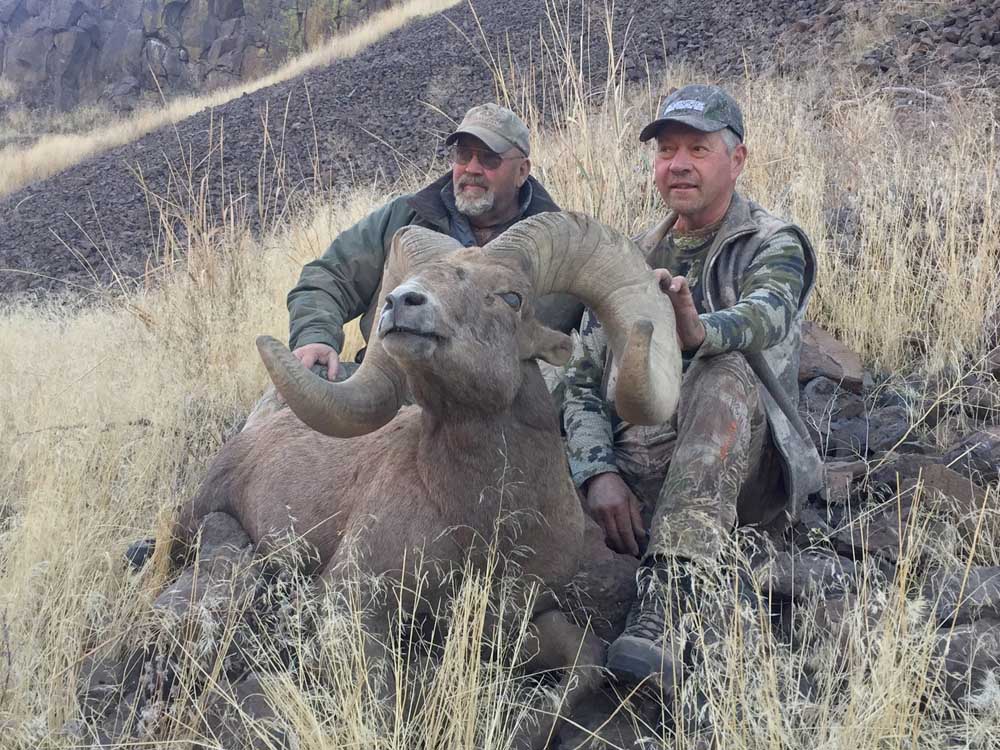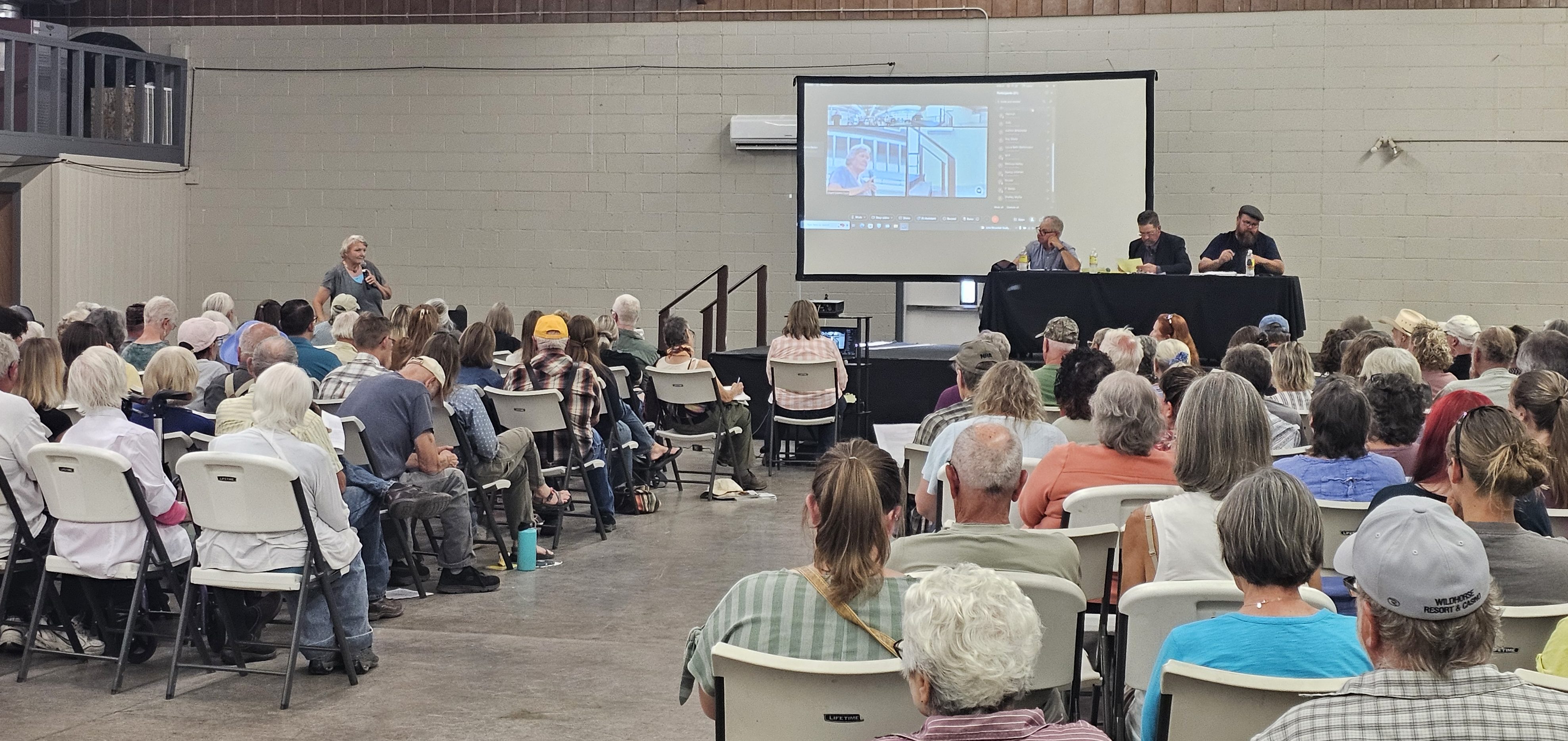Hunter going for the record books
Published 3:25 pm Tuesday, December 18, 2018

- Walt Kight shot this bighorn sheep Nov. 10, opening day of the East John Day River hunt, after 48 years of applying for a tag. The ram is the pending state record with a green score of 185 2/8.
Walt Kight has been hunting since he was a child, and he’s long had a special interest in sheep. He now can claim bagging three of the four sheep subspecies in the North American Wild Sheep Grand Slam and possibly a new state record for California bighorn sheep.
Trending
Kight moved to Grant County in 1972 after serving in the Marines. He typically hunts elk, deer, antelope and upland birds, but he’s traveled to Alaska five times for hunts, four of them without guides. He’s also worked for a British Columbia outfitter as a guide for elk hunters and hunted moose in British Columbia.
After leaving the Marines, Kight worked nine years for the Oregon Department of Fish and Wildlife running a fish-screening crew. During that time, he talked his way onto a sheep-trapping crew, netting sheep on the ground or from a helicopter. He left ODFW and went to work for a private contractor helicopter-netting sheep across the Northern Rockies.
Grand slam
There are six subspecies of wild sheep in North America — Dall, stone, Fannin, Rocky Mountain, California and desert. Some hunting organizations only recognize four subspecies, so a hunter only needs to bag four to qualify for the grand slam. It’s considered the most challenging grand slam for hunting.
Kight bagged a Dall sheep in Alaska and a stone sheep in British Columbia. He doesn’t expect to bag a desert sheep, which are found in Mexico, Arizona, New Mexico and Utah, because of the limited lottery chances, so he may never complete the grand slam recognized by the Wild Sheep Foundation.
Kight knew from his experience transplanting sheep around Oregon there were an abundant number of California sheep in Oregon. The current state record holder shot a California sheep in the Catlow Rim district near the Steen Mountains south of Grant County in 1997.
But getting a tag for a sheep in Oregon is not easy. Kight applied for a tag every year for 48 years. Unlike other hunts in Oregon, there are no preference points awarded to hunters who don’t get a tag, so the years piled on.
Finally Kight got his tag. It was for the third hunting season on the east side of the John Day River canyon. The district extends from Spray north to McDonald Ferry. Kight estimated 600 sheep live in the canyon, and each season allowed three animals to be harvested.
River canyon
Much of the district is Bureau of Land Management land, but Kight had permission to hunt on some private property, where he also camped. The 56,763-acre Stubblefield fire had burned in the area in August, so that limited some of the hunting area and raised the possibility sheep might move out of their normal habitat, Kight said.
The third hunting season kicked off on Nov. 10, but Kight wanted to begin scouting weeks in advance. Low streamflow prevented him from rafting the river until late October. He was joined by his wife, Kathy, on the float from Thirtymile Creek to the Cottonwood Bridge.
He spotted the ram he wanted 10 days ahead of the hunt. Not only did it have a large set of horns, but the ram stood out because its horns were chipped from fighting other rams. He nicknamed the ram Chiphorn.
Kight tracked the ram for the next 10 days, occasionally losing sight of the sheep and then finding him again on the talus slopes dotted with boulders in a side canyon. He said he never saw any other hunters.
His hunting crew showed up the night before the hunt. They included his longtime hunting friend Carl Stout, Kight’s stepbrother Chris Griffin, Griffin’s son David Griffin, David’s fiancee Nicole Sitton and David’s friend Jimmy Hurley. Their job was to help with the scouting and packing out the animal after the kill, but Kight had already done the necessary scouting.
The hunt
Opening day for the season began with a hiccup — Chiphorn couldn’t be found. Then Kight located a group of sheep about 800 yards away and saw Chiphorn join them. Kight, David and Nicole moved within 600 yards of the group. They changed positions several times and then crawled to within about 320 yards to take the shot. All told, several hours passed between spotting Chiphorn and the kill, including half an hour of crawling, Kight said.
Kight used a custom-made 7 mm magnum rifle made by Benchmark Barrels of Arlington and Oregonsmithing of Pendleton with a Leupold VX-6 scope. The 162-grain Hornady ELD-X bullets were handloaded by Stout, Kight said. The setup provided a flat trajectory at 3,000 feet per second.
Kight said he’s mostly a bowhunter these days, so he doesn’t see as much time at the target range as he used to, but all those years of hunting paid off. It was afternoon when he made the kill and dark when he hauled the 55-pound head and cape back to camp.
The hunting crew scored the ram at their camp, and Kight knew it was “knocking on the door for a new state record.” Later at home in John Day, a local Boone and Crockett representative and an ODFW official scored the ram at 185 2/8 with 40-inch curl horns. That’s a green score and is still pending — the horns must go through a 60-day drying period, Kight said.
Scoring by the Boone and Crockett Club includes tip to tip spread, length of horn, circumference at the base and circumference of the horns. Age can be determined by counting rings on the horns, starting from the tip. ODFW personnel estimated the ram’s age at 11 1/2 to 12 years old.
Kight said he plans to have the head and cape put on a pedestal mount by Merle Rempel in Vale, the same taxidermist who is remounting an antelope he shot in 1999. That was a No. 2 record holder, he said.









